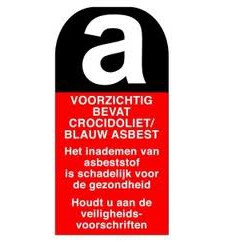Page content
Risks
Carcinogens can cause cancer. Mutagenic substances can alter the genetic material and substances toxic to reproduction can harm the unborn child. The consequences of exposure to CMR substances can be permanent or life-threatening. For the assessment of the work situation and the measures to be taken, no distinction is made between mutagenic, carcinogenic or substances toxic to reproduction.
Cytostatics are substances that are used for the treatment of patients with cancer and in research in this field. These cytostatics can also be carcinogenic themselves.
Many (suspected) carcinogens and mutagenic substances are used in laboratory research, such as acrylamide, boric acid, chloroform, formalin and ethidium bromide. Dyes in DNA research often fall under this category. Limit the use of these substances and adhere to the following regulations from the Working Conditions Decree to counteract the risks:
- Only work with a carcinogenic/mutagenic substance if replacement with a less dangerous alternative is not possible.
- Argue the reason for using it.
- Mark locations where carcinogens are handled.
- If exposure is possible, register these people as a risk group.
Mandatory registrations
In addition to the regular registration requirements, additional requirements apply to carcinogenic and mutagenic substances. The Ministry of Social Affairs and Employment (SZW) has lists of carcinogenic and/or mutagenic substances for which the following additional registration is mandatory:
- The quantity produced, used or present per year.
- The number of employees who may be exposed at the workplace.
- The nature of the work carried out with it.
- The way in which employees are exposed to it.
- The reason why use is strictly necessary and the substance cannot be replaced by a safer alternative.
- The protective measures taken.
Risk group
If the exposure assessment shows that the work with CMR substances poses a health hazard, the following data of the exposed employees must be recorded and retained for at least forty years after the termination of their work:
- The personal data of exposed employees.
- Exposure data: nature, degree and duration in regular work and in the event of incidents.
Prohibited substances

The following substances are in principle prohibited to work with. Only under strict conditions may research be carried out (Working Conditions Decree):
- benzene, carbon tetrachloride, pentachloroethane or 1.1.2.2. tetrachloroethane
- 2-Naphthylamine, 4-aminodiphenyl, benzidine, 4-nitrodiphenyl
- Propane sulton
- asbestos
SZW list of carcinogenic, mutagenic and reprotoxic substances
The Ministry of Social Affairs and Employment maintains a list of carcinogenic, mutagenic and reprotoxic substances and processes (CMR) as referred to in Article 4.11 of the Working Conditions Decree.
You will always find the most up-to-date list on the Health and Safety Portal about CMR substances of SZW.
